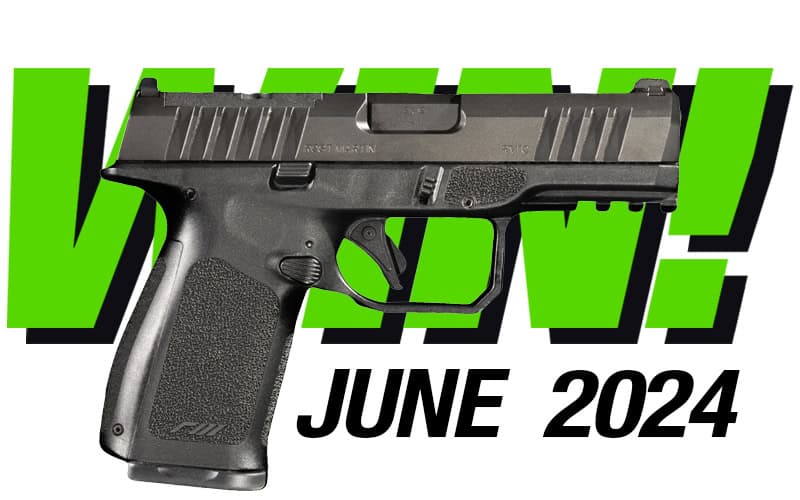Skills Tracking
How Do You Measure Your Performance?
Are you as good with a handgun as you used to be? It makes sense to keep track.
My friend and colleague David Maglio is a former Midwest Regional Champion IDPA shooter and a retired career deputy sheriff. In his current career, he is one of the best firearms instructors around. Among other accomplishments, he holds the record for quadruple speed on the qualification course I developed for Lethal Force Institute and now use at Massad Ayoob Group — the record is 299 out of 300 points on the demanding IPSC target.
At quad speed, that’s six shots in two seconds from the leather, dominant hand only, at four yards. Same again with non-dominant hand only, starting at low ready. Then six shots, reload, six more in 6.25 seconds from seven yards, starting with gun hand clear of the holstered weapon. Ten yards find you shooting six shots each from three different low cover positions (starting from standing) with two mandatory reloads in 18.75 seconds. At 15 yards, it’s a draw to six, reload, six, reload six from three different stances in 22.5 seconds.
Now, David set the record in 2004 with a long-slide GLOCK 17L with 3.5-lb. trigger. What’s interesting is in the summer of 2022, he did it again with a Gen3 GLOCK 19 with 5.5-lb. pull! Brother David is now in what might be called “late prime of life sneaking into middle age.” I’d say that, as a shooter, he’s aging pretty damn well.
And he has a performance track record to prove it.
Tracking Performance
David is a better shot than I am. My best on quad speed was a 296, with an Ernest Langdon-tuned Beretta 92, and was more than a decade ago. I shoot it more often to demonstrate to students at standard speed, and can almost guarantee a 300/300 — with the operative word being “almost.” As third quarter 2022 drew to a close, I had dropped a point to 299 more than once. From 100% to 99.7% may not be a precipitous plunge, but it darn sure ain’t an encouraging trend line.
The good news is, I have a trend line to warn me, like a canary in a mine shaft and this is the advantage of having a benchmark for shooting skills.
In my late teens and early 20s, I shot bulls-eye .22 gallery pistol matches in a league in southern New Hampshire. In season, we shot the same National Match Course every week. The 300 points possible — 10 shots in 10 minutes slow fire, two strings of timed fire (five shots in 20 seconds) and two more of rapid fire (five shots in 10 seconds). Each week there was the unforgiving score sheet to let you know if you were improving, declining, or staying steady.
Today, we have lots more options. Your home computers make it easier than ever to keep track of your scores. If you don’t think NRA’s five shots in 10 seconds constitute rapid fire — I don’t, but that’s beside the point — well, that’s what electronic gunshot timers are for. Heck, you can put a time app on your smart phone. Speaking of which, that smart phone can also be used to record you when you shoot. Reviewing the video of your course of fire will show you little mistakes you couldn’t catch when you were “in the bubble” with just you and the handgun.
A Respectful Suggestion
Find some course of fire, which tests skills relevant to your needs, and shoot it regularly. It gives you the track record of where you’re slipping and where you’re gaining. It tells you what you need to work on. The good news with games like IDPA and USPSA is each match is different and challenging, but the bad news is it doesn’t give you a constant standard against which to measure yourself, as shooting the exact same course does. NRA bulls-eye, now known as Precision Pistol, does so. So does something like the GLOCK matches, PPC or the NRA Police Service Pistol course. Ditto the IDPA Classifier courses.
On my home range, my single favorite spot is the Bianchi Falling Plates set-up from Action Target. There, I can either use the fixed times from NRA Action Pistol (10 to 25 yards, six shots only allowed for each set of six plates in fixed time limits), or free-style going for pure speed for shooting down all six. Pin-shooting is another good discipline for this. I’m at my all-time favorite such event, The Pin Shoot, every year and all of us there have the scores archived on their website to track our performance.
Your primary care physician tracks your blood count, weight, blood pressure and such with every visit. You want to be able to do the same with the health of your shooting.
In my case, the prescription is obviously “practice” but without a constant benchmark, you won’t be able to track the health of your own handgun shooting skills.










